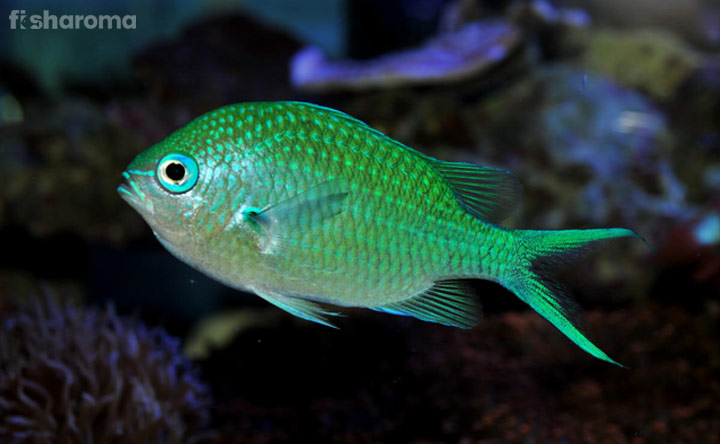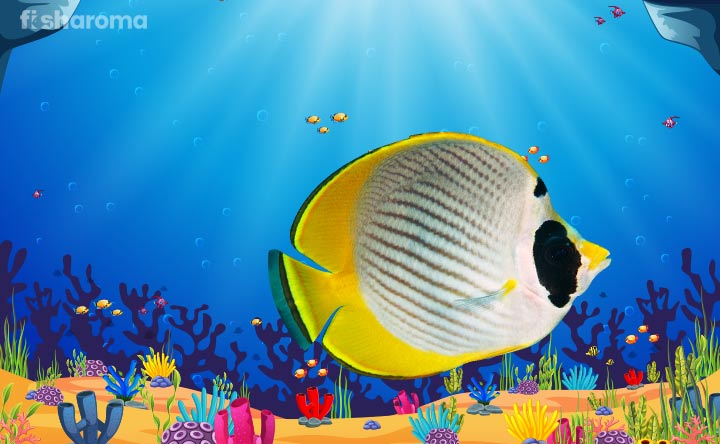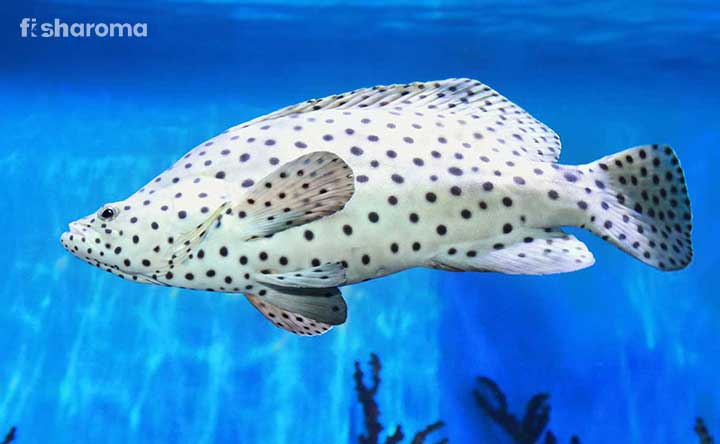Cat Shark – Complete Care Guide for the Saltwater Fish

- Origin of Cat Shark
- Appearance of Cat Shark
- Diet Planning for Cat Shark
- Tank Requirements for Cat Shark
- Water Type for Cat Shark
- Temperament of Cat Shark
- Suitable Tankmates of Cat Shark
- Breeding of Cat Shark
- Diseases of Cat Shark with Preventions
- Types of Cat Sharks
- Difficulties in Keeping Cat Shark
While planning to set an aquarium, we usually try to find out uncommon and rare water species which can be a great addition to our fish tank. However, for including an aggressive fish like Cat Shark, you need to acquire a complete knowledge about the breeding process of this fish.
Now, very few people prefer petting a territorial fish in their aquarium but some love taking challenges. We are here for them with a definite guide to take care of this fish. But remember, you have to bring the marine world in your aquarium because species of Shark family cannot survive without a perfect ambience of saltwater.
Quick Details on Cat Shark
| Scientific Name | Scyliorhinidae |
| Origin | Western Indian Ocean |
| Life-Span | 20-25 years |
| Color | Yellow-brown and other colors |
| Temperament | Aggressive |
| Size | Up to 48″ (121.92 cm) |
| Diet | Carnivore |
| Family | Scyliorhinidae, Hemiscylliidae, Pseudotriakidae |
| Compatibility | Limited |
| Tank Size | 350 gallons |
| Care Level | Difficult |
Overview
This is one of the well-known fish breeds in shark family who can live up to 20-25 years if you take proper care of this fish. The price of this fish varies from place to place. In some places, the range is about $80-$85 and at other places, the rate is from $150-$170. It is a bottom feeder, so it feeds on invertebrates and algae on the floor of the aquarium.
Although Cat Shark do not harm human beings, it is an aggressive fish, so beginners should avoid petting them.
Origin of Cat Shark
This saltwater fish is found in the Western Indian Ocean, Atlantic Ocean, the coast of Saldanha, Arctic Ocean and South Africa. This fish prefers living in mildly warm water. Usually, this fish prefers living around rocks and corals of saltwater. So, you need to provide a marine environment to this fish.
Appearance of Cat Shark
Colors, patterns, and sizes of the different variants of this species differ from each other. Generally, this aggressive species has a long cylindrical body, cat-like eyes, and a narrow small head. Some sharks are 30” (76.2 cm) and others are 60” (152.4 cm). The male Sharks are 33.4” (84.836 cm) and the females are 28.7” (84.836 cm).
The cat-like eyes are the main reasons behind the name of ‘Cat Shark’ and the eyes are located on the side of the head. Its long height and huge size need a big gallon tank to dwell. You will also find a bilaterally symmetrical pattern in the body of this shark fish.
Its teeth set gets replaced with another set within 18-38 days. Moreover, this fish has five pairs of gills; some are colorful such as dark-brown to gray and others have simple patterns.
Diet Planning for Cat Shark
This shark fish is a large predator fish in seabed who prefers eating natural, live and meaty foods. It is a large breed fish, so you need to feed much quantity foods to feed this fish as per the suggestions of fish nutritionists. Expert aquarists suggest feeding them 2-3 times a day. Some of the preferred foods of this fish are:
- Invertebrates
- Crustaceans
- Mollusks
- Small Fish
- Slow-swimming Camouflage Fish
- Squid
- Shrimps
- Meat Pellets
- Fish Fillets
You can also purchase nutritional foods for this fish which are available in the market such as:
- Taiyo Pluss Discovery
- Taiyo Fish Food Pouch
- Optimum Fish Food
Feeding pattern of Cat Shark changes with weather and water temperature. An expert nutritionist of fish can help you with the correct diet of your pet fish.
Tank Requirements for Cat Shark
This fish prefers dwelling in warm water surrounded with coral, reefs and marine animals. So, try to set a marine aquarium by checking the ambiance and temperature of the water. Follow some guidelines while setting a tank for this fish.
Tank Size
This aggressive fish can grow up to 5 feet (48”) and because of the shark’s aggressive and highly jumping nature, you should purchase a 350-gallon tank. Moreover, for the breeding process of Cat Shark, you need to buy a separate tank because this species becomes more aggressive when it spawns and lay eggs.
Ornaments
This Shark likes living at the bottom of the sea bed surrounded by reefs, rocks, sand, gravels, and boulders. So, try to keep those things in the aquarium when you are petting this fish.
You can keep small crevices instead of rocks because they are well-shaped and never cause any injury to the fish. Also keep the sandy substrate in the bottom of the tank because this fish is a bottom dweller, and it feels comfortable to rest in the sand.
Lighting
Cat Shark always prefers medium light, so try to fix a moderate light between 300-400W on the top of the tank because harsh light may irritate them.
Filter
A good filtration system is necessary to clean the dirt of the water and maintain hygiene for the fish. You can also buy a protein skimmer to remove waste from the fish tank.
Water Type for Cat Shark
As we know, the water condition of a fish tank is the main thing we have to look upon, so follow some common guidelines for maintaining the perfect water temperature, hygiene, and other necessities. You can directly purchase a saltwater aquarium from market to keep fish like Cat Shark, or else just follow some instructions to set a tank for this fish.
Temperature
As mentioned in the beginning, this fish lives in the warm water of the Western Indian Ocean, so the water temperature of its tank should be 78.8°F (23.8889°C).
pH Level
The pH level should be 8.2-8.4.
Specific Gravity
The specific gravity of its tank should be 1.020-1.025.
Hardness
The hardness of the water should be 8-12 dKH.
Cleaning Method
Don’t use harsh chemicals and tough soap to clean the aquarium or the other objects inside it because the harshness of the soap may be harmful to the fish. Use mild liquid soap to clean the entire tank twice in a month. After washing, wipe out the objects and walls of the tank with a soft white-colored cotton cloth.
Replacement Procedure
It is mandatory to check the algae growth in the water because excess algae growth makes the water of the tank dirty. So, you need to change at least 10% total volume of water if you are changing weekly basis, but when you are changing the water monthly basis, replace 25% of the total water volume of the aquarium.
While commencing the procedure of keeping the new batch of water, check the water temperature, hardness, pH level, salinity, and other important things.
Create an artificial current at the bottom of the tank because Sharks prefer swimming in the high-flowing water.
Temperament of Cat Shark
As mentioned earlier, Cat Shark is a territorial, bold and aggressive fish found in the saltwater, and it is not social with every water species, so you have to keep these things in mind before keeping the fish in your aquarium. Usually, it consumes crustaceans, small fish and slow-moving aquatic creatures. So, you need to avoid putting peaceful and small fish in the tank. Moreover, don’t keep fish of the same family in the same tank because that can lead fighting between the two sharks.
Suitable Tankmates of Cat Shark
Most of the time you will find this fish spending their time in the seabed or bottom part of the tank, which is why they are known as bottom dwellers. This fish becomes hostile towards both large size and small size breeds, so they prefer dwelling alone or with fewer members. You can keep some suitable tankmates for this fish such as:
- Hippo or Yellow Tangs
- Harlequin Tusks
- Lionfish
- Moray Eel
Try to avoid keeping some fish that are a competitor to Cat Shark such as:
- Angel Fish
- Triggerfish
- Puffers
You can keep a maximum of three Cat Sharks together in the tank, because keeping more than that can create a violent fight and bloodshed.
Breeding of Cat Shark
These oviparous fish lay eggs in the bottom part of the tank on sandy substrate. The breeding process of Cat Shark is not very simple because this fish needs a large tank during the spawning process. Sharks become more aggressive while spawning. Therefore, another large tank is needed to be purchased, if you want to encourage its breeding.
Male Cat Sharks are 17” and female Sharks are 15” when they are ready to mate and spawn. The female fish attach the eggs to the sandy substrate of the seabed to secure the newborn fries. When the young fish grows up to 4” in length, they start finding their food. Only expert aquarists can breed and maintain the difficult fertilization process of Cat Shark.
Diseases of Cat Shark with Preventions
Cat Shark is a hardy fish but because of the scarcity of food and poor water condition in the tank they get affected by different diseases like:
- Parasitic Infection
- Fungal Infection
- Goiter
To prevent these diseases, feed them as per the diet recommendation of a fish nutritionist and keep the ambiance of the aquarium clean. Moreover, maintain the water parameter and salinity of the marine tank before keeping a Cat Shark in the tank.
The low temperature of the water may slow down the metabolism of this fish. Try to change 10% of the water in the aquarium weekly. Also, try to maintain the hygiene of the fish tank by keeping clean objects.
Add antibacterial chemicals to the water of Cat Shark to keep it away from endocrinal diseases like Goiter which is caused because of the low iodine in water.
Types of Cat Sharks
Not only Cat Shark, but there are also numerous species in the genus of Shark who have different appearance, requirements and living styles. Descriptions about some common breeds are mentioned below:
- Leopard Cat Shark – You will find this nocturnal Cat Shark in the warm coastal water of South Africa. The pattern and light gray-brown color of this 33” fish is similar to a leopard. This fish has large oval-shaped eyes and asymmetrical caudal fin. Usually, this fish is found hunting small fish and crustaceans at night at the bottom of the sea.
- Pale Cat Shark – This species is the second smallest shark in the family. It reaches about 8.2” in length when it becomes an adult. Native to Makassar Strait in Indonesia, Pale Cat Shark is a deep-sea fish that loves staying in the depth of the ocean. The reddish-white color of the fish is the reason that fish hobbyists get attracted to own this fish for their aquarium.
- Panama Ghost Cat Shark – This is the third smallest fish of Cat Shark family that reaches up to 9” in length. You will find this shark in the Pacific Ocean on the coast of Panama. The pale pink body with silvery shine can increase the brightness and beauty of your tank. So, most of the aquarists like petting this fish.
- Atlantic Ghost Cat Shark – Native to the Eastern Atlantic Ocean, this 9.25” Cat Shark is also found in Portuguese Island of Madeira. This brown-shaded python-patterned fish is rarely found but expert aquarists always look for this uncommon species for adding it in their aquarium.
Difficulties in Keeping Cat Shark
It is really not an easy task to keep a large and aggressive fish like Cat Shark in a home aquarium. It requires lots of knowledge and techniques. The breeding process of this fish is complex because sharks are not comfortable to lay eggs in captivated condition. An experienced aquarist can help the fish during this condition.
Also, Cat Shark is known for eating small fish and invertebrates, so you need to be very wise to choose the perfect companion for them to avoid fighting and killing of other innocent species.
Interesting Facts about Cat Shark
- Cat Shark has 5-15 rows of teeth in their jaw.
- Fish breeds from Shark family are 450 million old.
- Coral Cat Sharks need four months to develop its eggs.
- Sharks are so violent that its embryos attack each other when they are in the womb.
- Cat Shark has a killer sixth sense through which it can detect its prey.
- Its eyes are very sharp which helps it find out small invertebrates and disguising fish in the water.
- Some sharks are pregnant for two years.
- Female Cat Sharks can be impregnated by multiple mating partners at a time.
- It can reproduce without a male shark.
Know about Other Aggressive Saltwater Fish
Expert aquarists can pet other aggressive and territorial fish breeds if they have the proper care guide and ideas with them. Some of the rageful fish are:
- Emperor Angelfish: Although Emperor Angelfish is a hardy species, fish aquarists suggest to gather some significant information while breeding this territorial fish. If you want to know the reason then learn the details about Emperor Angelfish.
- Garibaldi Fish: This bright-orange plump fish is one of the semi-aggressive fish in Saltwater, so fishkeepers are suggested not to keep this fish with the same species. To know more about this fish, study the entire article.









